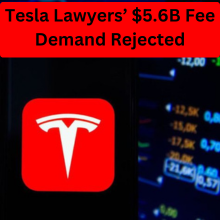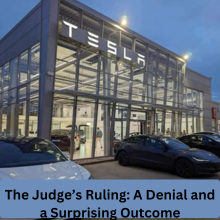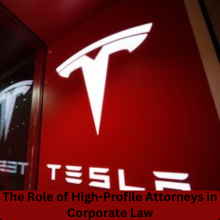
In one of the most high-profile legal battles in recent memory, Tesla’s CEO Elon Musk found himself facing a lawsuit that challenged his astronomical pay package, a deal valued at over $100 billion. While the case itself centered around whether Musk’s compensation was excessive, the real drama unfolded when the lawyers who fought for the shareholders’ rights demanded a staggering $5.6 billion in legal fees. The case has captured public attention, both for the colossal sum of money involved and the broader questions it raises about executive pay, corporate governance, and shareholder rights.
What Was the Lawsuit About?
The case began when shareholders questioned the legality of Musk’s pay package, which, at its peak, was worth more than $100 billion. The deal, which didn’t include a salary but tied Musk’s compensation to the company’s performance and stock price, was seen by some as an outrageous reward for a CEO. Critics argued that such a compensation structure benefited Musk more than Tesla’s shareholders, creating a potential conflict of interest.
The plaintiffs, led by a group of law firms, argued that the pay package violated Delaware law, which requires that executive compensation be both reasonable and in the best interest of shareholders. They alleged that the deal, created in 2018, was too favorable to Musk and didn’t go through proper approval processes.
The Lawyers Who Took on Tesla and Musk
Three law firms were involved in this monumental case: Bernstein Litowitz Berger & Grossman LLP, Andrews & Springer LLC, and Friedman Oster & Tejtel PLLC. These firms aren’t exactly newcomers to high-profile corporate law battles; they are seasoned players in shareholder derivative suits. Their strategy in this case was clear: they believed Musk’s pay package was both a corporate governance issue and a violation of the fiduciary duties owed to Tesla’s shareholders.
The lawyers argued that Musk’s pay was more like a personal gift than a business deal aimed at driving value for shareholders. With this, they hoped to secure a significant legal victory—not just for Tesla, but for corporate accountability.
The Legal Journey: A Timeline of the Lawsuit
The lawsuit took months to develop and reached a boiling point in 2023 when Delaware Chancellor Kathaleen McCormick delivered her ruling. Initially, Musk had hoped to have the pay package reinstated, but the judge denied his bid. What followed was a legal battle over how much the lawyers should be compensated for their work in bringing the case to a successful conclusion. This wasn’t just about a corporate giant versus a few lawyers; it was a larger debate on the ethics of executive pay and whether the legal fees should match the size of the compensation package being disputed.
The Judge’s Ruling: A Denial and a Surprising Outcome
Chancellor McCormick made it clear that she would not reinstate Musk’s pay package, reasoning that the package had been created in a way that was unfair to Tesla’s shareholders. However, the most eye-catching aspect of her ruling came when she addressed the lawyers’ fee request.
While the plaintiffs’ attorneys initially demanded $5.6 billion, McCormick didn’t accept this as reasonable. Instead, she awarded them $345 million in either cash or Tesla shares. This sum, though still substantial, was a far cry from the billions they initially requested. The judge acknowledged the substantial effort put into the case, including nearly 20,000 hours of legal work, but also noted that a $5.6 billion fee would be a windfall that didn’t align with the case’s scope or the risks taken.
The $5.6 Billion Legal Fee Demand
So, how did the lawyers come to ask for $5.6 billion? The sum wasn’t pulled out of thin air. It was based on the size of the compensation package that they were challenging—$55.8 billion in total. The plaintiffs’ attorneys used a common method for calculating legal fees in derivative lawsuits, which typically involves taking a percentage of the value of the recovery or rescission. Since the case centered around rescinding a massive pay package, the lawyers argued that their fee should reflect the scale of the payout.
However, the judge disagreed. She noted that, while the lawyers worked hard and faced significant risks, $5.6 billion was excessive for the scope of the case. The judge also pointed out that the lawyers were already receiving a hefty sum, which would amount to a 25.3 multiplier on the number of hours worked.
The Judge’s Alternative: $345 Million
In the end, the lawyers were awarded $345 million, which Tesla’s attorneys had argued was far too high. Tesla had suggested a figure closer to $54.5 million, which they argued was more in line with the time and effort involved. The lawyers, however, made their case, citing the extensive nature of their work, including the 19,500 hours they logged, multiple depositions, document discovery, and in-depth investigation.
In the judge’s view, the lawyers were entitled to a large reward, but not a windfall. The $345 million figure was seen as a fair compromise, taking into account the value of their efforts without inflating it to an unreasonable level.
Also read: Insurance Giant Anthem Backs Down on Anesthesia Time Limits
The Methodology Behind the Fee Award
The judge’s decision to reduce the fee request to $345 million came down to the method used to calculate the lawyers’ pay. While it’s typical for lawyers in shareholder derivative suits to receive a percentage of the value of the recovery, the judge believed that the $5.6 billion fee was disproportionate.
The methodology behind the judge’s decision involved examining the work done by the lawyers, the complexity of the case, and the size of the recovery. By using a 25.3 multiplier of the hours worked, the judge arrived at a figure she felt was more in line with the case’s scale.
The Importance of the Case for Shareholders
The lawsuit is significant for shareholders because it shines a light on the sometimes murky world of executive compensation. Shareholders are the ones who are often left to foot the bill when executives are overpaid. The case may pave the way for more scrutiny of executive pay packages, especially in tech companies where the lines between corporate governance and personal enrichment can blur.
A Deep Dive into the Law Firms’ Efforts
The legal battle wasn’t just a battle of legal minds. It required an immense amount of time, effort, and expertise. The lawyers logged a total of 19,499.95 hours, which included not just courtroom time but also investigation, depositions, and document discovery. This was a team effort involving some of the best lawyers in the country, and the result was a major victory for Tesla shareholders.
The Role of High-Profile Attorneys in Corporate Law
The attorneys behind the lawsuit are no strangers to high-stakes legal battles. These law firms have represented shareholders in several high-profile corporate cases, often involving large corporations with significant financial stakes. Their experience and strategy were key to the success of this case.
The Economic Impact: A $100 Billion Pay Package and Its Controversy
Musk’s pay package, which was based on performance milestones tied to Tesla’s growth and stock price, raised eyebrows when it was first announced. The compensation was structured to reward Musk with stock options if Tesla achieved certain goals. However, critics argued that this pay deal was too generous and that it gave Musk an outsized influence over the company’s fortunes.
Tesla’s Defense and Counterarguments
Tesla’s legal team fought hard against the lawsuit and the demand for massive legal fees. They argued that Musk’s compensation was justified by the company’s performance and that the lawyers were overreaching with their fee demands. Tesla also argued that the deal had been negotiated with shareholder input, further complicating the case.
The Future of Executive Pay in Corporate America
This case is likely to have lasting implications for executive pay packages across the tech industry. If the legal system begins to scrutinize these types of compensation deals more closely, it could set a precedent for other companies to follow. Shareholders may demand more accountability and transparency in executive pay, especially when it comes to the tech giants.
Also read: When Does Spotify Wrapped 2024 Drop? Here’s The Date
Conclusion
In the end, this lawsuit wasn’t just about Elon Musk’s pay—it was about holding corporate executives accountable for the decisions they make. While the legal fees may have been reduced, the case marks a significant moment in corporate governance. The ruling shows that even the wealthiest CEOs are not immune to legal challenges and scrutiny from shareholders.
FAQs
What was the lawsuit about?
The lawsuit challenged Elon Musk’s $100 billion pay package, arguing that it was excessive and violated Delaware law.
Why did the lawyers ask for $5.6 billion in fees?
The lawyers based the fee request on a percentage of the $55.8 billion pay package they helped rescind.
How much did the lawyers ultimately receive?
The lawyers received $345 million, a significant reduction from their original request.
What does the judge’s ruling mean for Tesla?
The ruling means that Musk’s pay package remains rescinded and that shareholder rights have been upheld.
Will this case affect executive pay in other companies?
Yes, this case could set a precedent for future scrutiny of executive pay, especially in tech companies.

